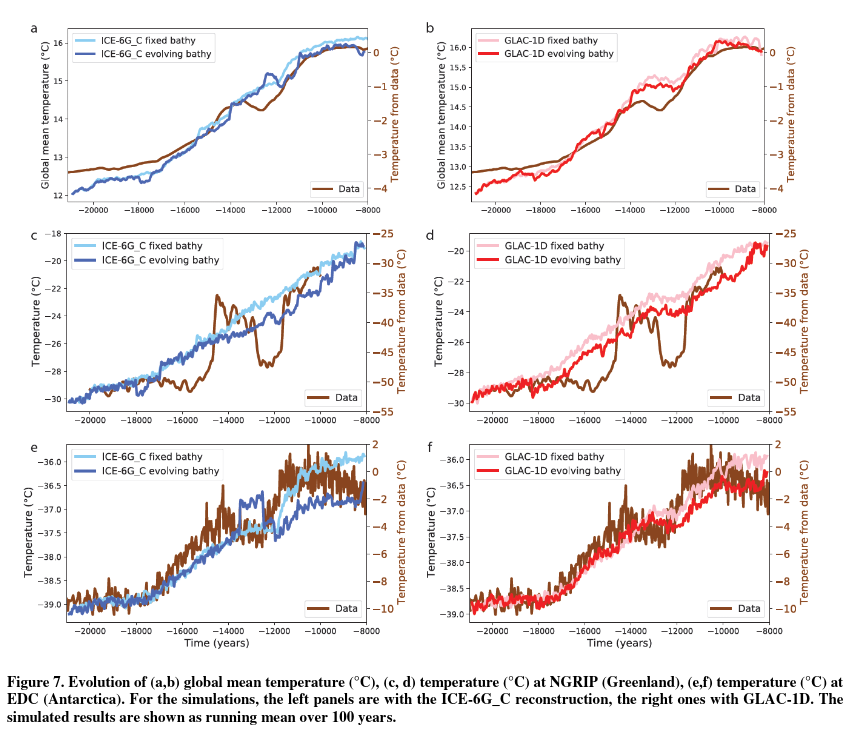Deglacial climate changes as forced by ice sheet reconstructions
Written by Pepijn Bakker no comments
Nathaelle Bouttes and co-authors use the iLOVECLIM model to study the last deglaciation. They assess the impact of ice sheet reconstructions, bathymetry changes and freshwater fluxes. Investigating the last deglaciation using the iLOVECLIM model and assessing the impact of ice sheet reconstructions, bathymetry changes and freshwater fluxes. During the Last Deglaciation, the climate evolves from a cold state at the Last Glacial Maximum at 21 ka with large ice sheets, to the warm Holocene at ~9 ka with reduced ice sheets. The deglacial ice sheet melt can impact the climate through multiple ways: changes of topography and albedo, bathymetry and coastlines, as well as fresh water fluxes. In the PMIP4 protocol for deglacial simulations, these changes can be accounted or not depending on the modelling group choices. In addition, two ice sheet reconstructions are available (ICE-6G_C and GLAC-1D). In this study, we evaluate all these effects related to ice sheet changes on the climate using the iLOVECLIM model of intermediate complexity. We show that the two reconstructions yield the same warming to a first order, but with a different amplitude (3.9°C with ICE-6G_C and 3.8°C with GLAC-1D) and evolution. We obtain a stalling of temperature rise during the Antarctic Cold Reversal (from ~14 ka to ~12 ka) similar to proxy data only with the GLAC-1D ice sheet reconstruction. Accounting for changes in bathymetry in the simulations results in a cooling due to a larger sea ice extent and higher surface albedo. Finally, fresh water fluxes result in AMOC drawdown, but the timing in the simulations disagrees with proxy data of ocean circulation changes. This questions the links between reconstructed fresh water fluxes from ice sheet melt and recorded AMOC weakening and their representation in models.
Photo: Simulated and reconstructed global mean temperatures. Figure 7 in publication
Link to publication: Bouttes et al. 2022
Written by: Pepijn Bakker
Classified in : Uncategorized Tags : CLIO, ECBilt